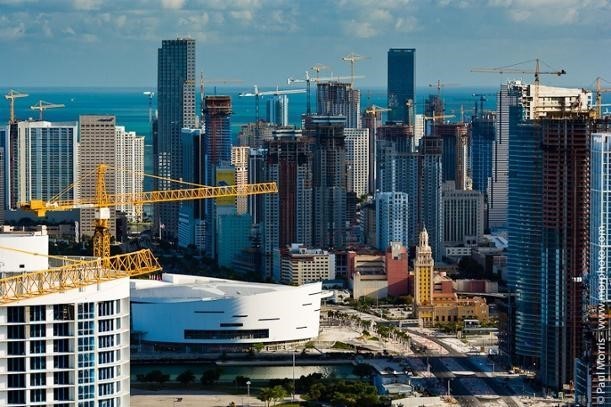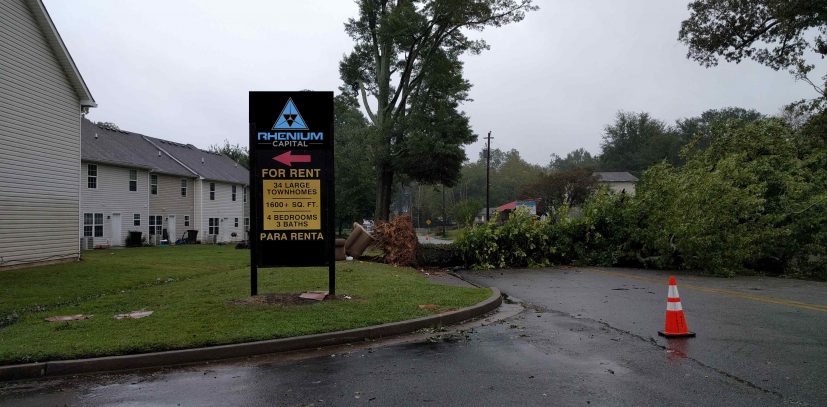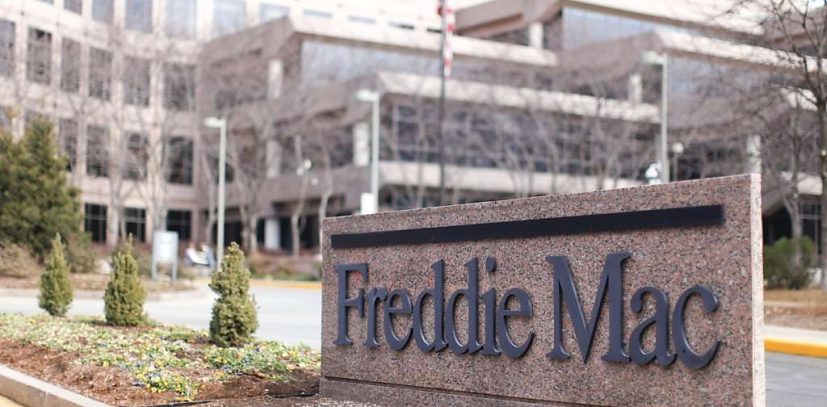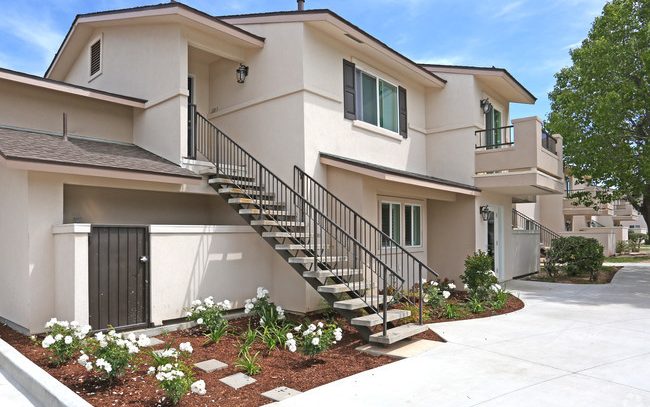A near perfect storm is brewing down in sunny Miami, and not of the named tropical cyclone variety. This particular storm involves one too many luxury condos (actually +13,000), crumbling socialist regimes in South America and the enforcement arm of the United States Treasury. The aftermath of this storm may be a familiar one to anybody that was down here post 2008… and no, this time it’s not really all that different.
Brazil & Venezuela
First, the home countries of the top two buyers of Miami luxury condos, Brazil & Venezuela, are
in serious trouble and absolute freefall, respectively. On the tail end of the Venezuelan socialist paradise, long term low oil prices coupled with a drought have fueled barren store shelves, infrastructure failure and the inevitable upheaval of a desperate population met with the violent repression of a desperate government. Regarding Brazil, in the wake of monumental corruption further fueling a record recession, the ouster and coming impeachment of the leftist president and the ever present Zika virus, turmoil reigns supreme amidst the international spotlight of the 2016 Summer Olympic Games.
The expected result has been referred to as a “strong dollar” in relation to these currencies, but in all honesty the Venezuelan bolívar will likely not be worth the paper its printed on by the end of the year. The jury is still(somewhat) out on Brazil, but with political and economic crisis followed by Olympian debt, the mid to long term state of their economy does not bode well for a strong real.
Back to Miami, is the condo market actually more stable this time? After admitting that there has been a “backing off” of foreign buyers from Brazil and Venezuela, Alicia Cervera of Cervera Real Estate (and board member of the taxpayerfunded Miami Downtown Development Authority) mentions said stability measures in the Miami Herald:
“But unlike the housing crash of 2008, foreign buyers aren’t walking away from their units. That’s because developers asked for 50 percent deposits when they saw the market coming back in 2012. Few investors are willing to walk away from that much money down.
Four or five months ago, brokers and [investors] were calling me and saying they would buy up any units that didn’t close,” Cervera said. “[But] everything is closing. The tendency is to compare this market to what happened nine, 10 years ago. The truth is, it’s extremely different.”
Tougher Regulations
Enter the second point, which has the very real potential of equalizing last decade’s market to that of today. It is in fact mentioned eversoeloquently in this video:
U.S. Will Track Secret Buyers of Luxury Real… by wochitbusiness
The director of the Department of the Treasury’s U.S. Financial Crimes Enforcement Network (FinCEN) Jennifer Shasky Calvery refers to the Miami luxury housing market as a “mecca for money laundering”. As such, the Feds are taking a much harder look at the all or mostly cash purchases of Miami luxury real estate. Incidentally, the 50%+ cash backstop to prevent a housing crash redux falls right in their crosshairs, and this is the vast majority of what is coming online in the next two years. The key is for those who have “nothing to hide” to disclose their identities to the government to prevent folks from acquiring highend real estate with questionable capital. Unfortunately, the unintended consequence will be a further chilling of demand from buyers with legitimate reasons for anonymity:
“You see a lot of safety concerns with people from Brazil or Argentina, for example. They don’t want people from their home country to go and look on the Internet and see that they paid a lot of money for a house and become a target for kidnapping.”
Foreign buyers will also be nervous about the prospect of Treasury officials contacting their governments, said Jeffrey Rubinger, an attorney at Bilzin Sumberg who specializes in international tax law. Information sharing could expose them to more tax liabilities.
“From a tax perspective alone, this is definitely going to scare people,” Rubinger said. “Then you have the worries about losing anonymity.”
Rampant Oversupply
The third and final catalyst for this coming storm is the sheer volume of product to be delivered, which has been glossed over by the mainstream media as to not discourage remaining demand. Per StatFunding’s May 2016 Miami Preconstruction Condo Market Update (available here), here is a quick summary:
Current Condo Cycle:
- 3,231 condo units were completed from 2012 – Q2 2016 (15 projects).
- 11,100+ similar lux condo units are to be delivered in the next 24 months.
Resale Activity:
- For the first time in 5 years, resale prices declined 4% in Q1 & Q2 2016.
- Current resale supply = 21% of units completed since 2012 (688) are currently listed on the MLS. Only 34 have sold in the last 6 month, indicating a 126+ month current sales rate for EXISTING units.
- An additional 11,100 units (37 projects!!!) are set to be delivered in the next 24 months.
Preconstruction Buyer Strategy:
- Given the impending flood of resale units into an already less than liquid market, precon buyers will be forced to sell at significant losses, particularly if they do not want to disclose their identities per the FinCEN initiative.
- Owners who do not (or can’t) sell will end up flooding the rental market with new units and paying any difference in their mortgage debt service, as well as the massive HOA Fees that come part and parcel with super high end luxury amenities.
Lenders and Debt:
- Lenders financing the condo market will yield significant losses via default.
- Financing will dry up, further depressing prices and demand for condo units.
- The 50% precon buyers may not be able to close without financing, and making up the difference in cash may increase FinCEN scrutiny.
So what is going to happen when the storm makes landfall, and what will the aftermath look like? Believe it or not, there is opportunity to be found here. We will prognosticate on the mass “apartmentization” of an overbuilt, over amenitized multihousing market while bracing for the inevitable “no one saw this coming” MSM articles in part 2 of this blog.












Ernesto
Great commentary! What about all the high end retail and restaurants going up in MIA as well?
Ernesto
Great commentary! What about all the high end retail and restaurants going up in MIA as well?
Dan
What goes up, I guess.
Dan
What goes up, I guess.
Doug
Doug,
The economic reality is about to change dramatically in the US in the next 24 months as confidence in Trumps vision for a more robust economy unfolds. How that translates to a Miami condo market is not clear (by me anyway). I suspect it will have positive effect and the existing inventory should do OK, that is if it’s good real estate.
i would be more worried about the next wave of development. But who knows?? by the time developers go through the development process the fundamentals could be completely different… what a crap shoot they and their financiers play.
Guillermo Birmingham, CPA
The”economic reality”? Is about to change dramatically? In the US in the next 24 months?” as confidence in Trump’s vision of a more robust economy unfolds?”
What kind of economic analysis is that? You’re stating this like it’s a done deal. The easy part is to have a vision, no matter how one aligns politically. The hard part is actually taking the steps necessary to have that vision come to fruition. Here’s my problem with Trump’s plan (and the Republican ethos, cutting taxes, eliminating regulations, cutting social programs only benefits one segment of the population and has NOT proven over more than half a century to spur economic activity or generate a wider tax base with increasing government revenues. The great Ronald Reagan, the pillar of the Republican Party learn that quickly after he lowered taxes…this was followed by 11 tax increases during his tenure (2 of which were 4 months apart). In more recent times, it didn’t work for George W Bush (we remember that train wreck of an economy), the State of Kansas’ economy went into the tank after the idiotic fiscal policies of Governor Brownback and as my last exhibit…look no further tha the State of Louisiana whose Governor Jindahl sold their economic souls to Grover Norquist and his “American for Tax Reform” organization.
Trump proposes tax cuts while at the same time spending more on Defense…I just have one question…Why do you think this failed model will work this time?
With regards to the oversupply of inventory in Miami, just look back to the last time the real estate market took a hit in South Florida…my prediction is that it will be another disaster…which may offer investors a good opportunity to control properties when the time is right.
Doug
Doug,
The economic reality is about to change dramatically in the US in the next 24 months as confidence in Trumps vision for a more robust economy unfolds. How that translates to a Miami condo market is not clear (by me anyway). I suspect it will have positive effect and the existing inventory should do OK, that is if it’s good real estate.
i would be more worried about the next wave of development. But who knows?? by the time developers go through the development process the fundamentals could be completely different… what a crap shoot they and their financiers play.
Guillermo Birmingham, CPA
The”economic reality”? Is about to change dramatically? In the US in the next 24 months?” as confidence in Trump’s vision of a more robust economy unfolds?”
What kind of economic analysis is that? You’re stating this like it’s a done deal. The easy part is to have a vision, no matter how one aligns politically. The hard part is actually taking the steps necessary to have that vision come to fruition. Here’s my problem with Trump’s plan (and the Republican ethos, cutting taxes, eliminating regulations, cutting social programs only benefits one segment of the population and has NOT proven over more than half a century to spur economic activity or generate a wider tax base with increasing government revenues. The great Ronald Reagan, the pillar of the Republican Party learn that quickly after he lowered taxes…this was followed by 11 tax increases during his tenure (2 of which were 4 months apart). In more recent times, it didn’t work for George W Bush (we remember that train wreck of an economy), the State of Kansas’ economy went into the tank after the idiotic fiscal policies of Governor Brownback and as my last exhibit…look no further tha the State of Louisiana whose Governor Jindahl sold their economic souls to Grover Norquist and his “American for Tax Reform” organization.
Trump proposes tax cuts while at the same time spending more on Defense…I just have one question…Why do you think this failed model will work this time?
With regards to the oversupply of inventory in Miami, just look back to the last time the real estate market took a hit in South Florida…my prediction is that it will be another disaster…which may offer investors a good opportunity to control properties when the time is right.
peter
trump is not likely to let his florida properties decline in value. nothing to worry about here…
peter
trump is not likely to let his florida properties decline in value. nothing to worry about here…